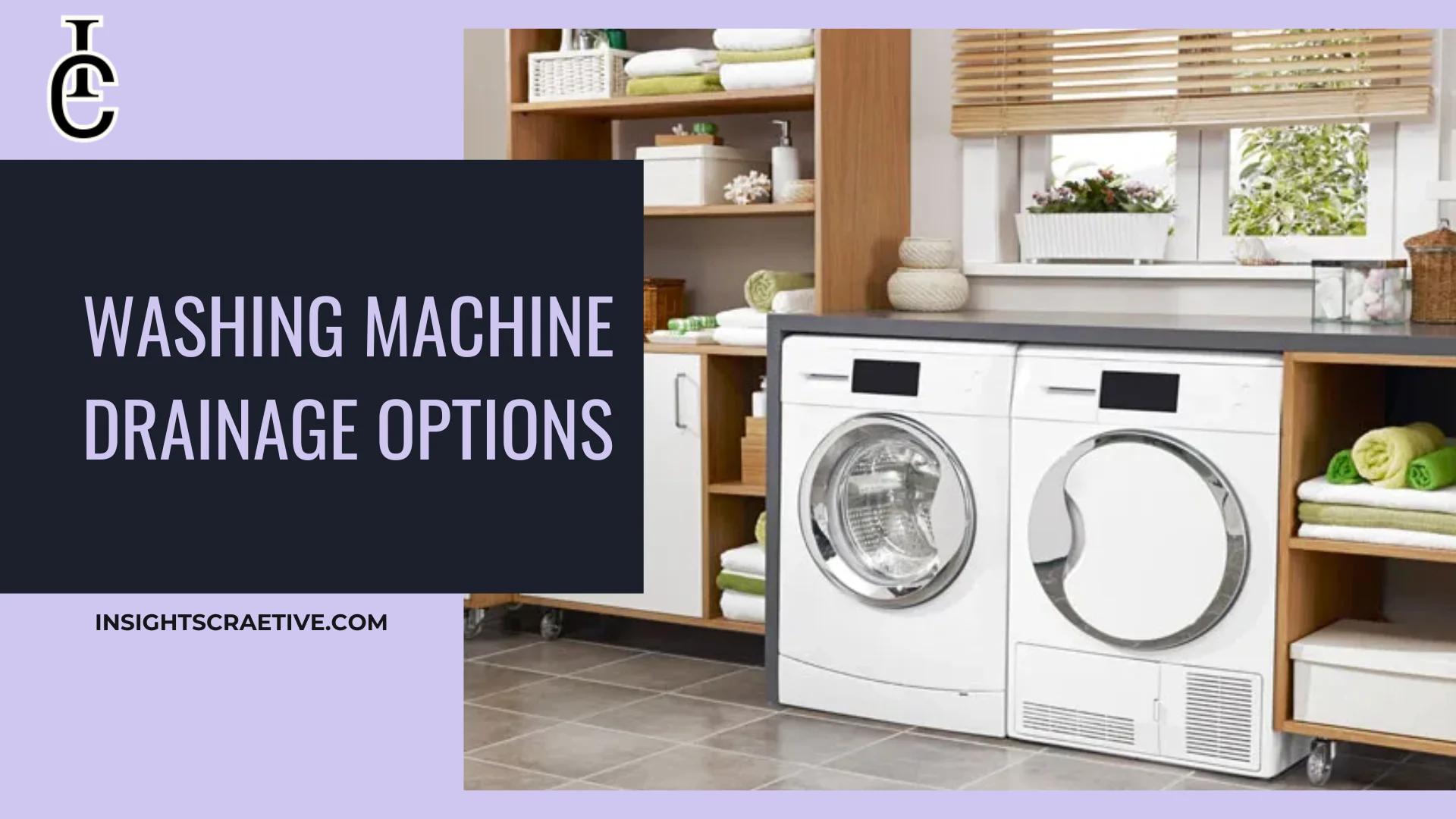Setting up the right drainage system for your washing machine is crucial for proper water disposal and avoiding leaks or flooding. Whether you’re in a basement or laundry room, understanding various drainage options can help you maintain the efficiency of your appliance and prevent costly repairs. Here, we’ll explore the top five drainage methods for washing machines, covering their pros, cons, and installation tips. We’ll also touch on questions like, “Can you drain your washing machine outside?” and explore alternative wastewater disposal methods like greywater systems, septic tanks, and sewer lines.
1. Use a Clothing Tub as a Drainage Option
A clothing tub, also known as a laundry tub, is a convenient way to handle washing machine drainage. It’s a versatile and easy solution, particularly for older or compact laundry rooms. To use a clothing tub, position your washing machine drain hose so it empties into the tub. This setup offers a buffer to catch lint or small objects that might escape the washing cycle, reducing the risk of clogs in your main drain line.
This method also simplifies maintenance, as cleaning a tub is often easier than unclogging a pipe. However, be mindful of overflow risks. If you’re frequently running large loads, monitor the water level to avoid spills. A tub is a temporary solution and might not be ideal for high-efficiency washers or machines with high water output.
2. Install an Underground Line for Washing Machine Drainage
Installing an underground drainage line offers a permanent, efficient solution for managing wastewater. This method involves connecting the washing machine drain hose to a buried pipe that leads to the main sewer line or an approved wastewater disposal system. It’s especially useful for homes with limited interior drainage options.
However, installing an underground line requires professional plumbing skills. It’s an investment but can increase property value by improving your home’s water management. Ensure the line has proper slope and grading to prevent water from pooling in the pipe. Additionally, check local regulations, as some areas have strict codes for underground wastewater lines, especially if it connects to a septic system.
3. Drain Your Washing Machine into a Utility Sink
A utility sink is a practical solution in laundry rooms or basements. Utility sinks are deep and built to handle large volumes of water, which makes them ideal for washing machine drainage. To set this up, connect your washing machine drain hose to the sink, allowing wastewater to flow directly into the sink’s drain.
Utility sinks reduce the risk of flooding as they catch overflow before it becomes a problem. Some utility sinks come with built-in filters, which trap lint and debris before they reach the plumbing. However, sinks should be periodically cleaned to prevent clogs. This setup is best suited for laundry rooms with sufficient space and can serve as a convenient spot for pre-treating clothes or other household tasks.
4. Use a Standard Drain Pipe for Washing Machine Water Disposal
Connecting your washing machine to a standard drain pipe is one of the most common and reliable drainage options. This setup involves attaching the drain hose to a pipe that connects to your home’s main drainage system, which then channels water into the sewer line or septic tank.
Ensure that the drain pipe is correctly sized and positioned to handle the washing machine’s water output, as an undersized pipe can lead to overflow and flooding. Many homeowners use a standpipe—a vertical pipe attached to the drain—when connecting the washing machine drain hose. This pipe should ideally be 2 inches in diameter and reach a height of about 18-30 inches above the floor. The height is essential for proper siphoning, preventing backflow, and minimizing the risk of flooding.
5. Utilize a Freestanding Standpipe for Efficient Drainage
A freestanding standpipe is an excellent choice if you need a separate drainage option for your washing machine. It’s a vertical pipe attached to the washing machine drain hose, leading directly to the main drain. The standpipe provides an air gap, which prevents backflow and keeps wastewater from re-entering the washer.
This setup is commonly used in basements or areas where connecting to a traditional plumbing line isn’t feasible. Make sure the standpipe has a U-bend trap to prevent sewer gases from entering your home. Regularly inspect the pipe for any signs of clogs or leaks to maintain its efficiency. The standpipe should be securely anchored, as the vibration from the washing machine can loosen it over time.
Can You Legally Drain Your Washing Machine into the Backyard?
Draining washing machine water into the backyard is possible but not always legal. Local codes regulate this, as wastewater contains soap, detergents, and other substances that can affect soil quality and harm plants or groundwater. In some states, draining a washing machine outside is strictly prohibited, especially in areas with high groundwater pollution concerns.
If allowed, direct washing machine drainage outside can be managed using a greywater system. This setup filters and reuses water for garden irrigation, conserving water and reducing wastewater sent to treatment facilities. However, avoid using harsh chemicals in your wash cycles if you plan to recycle this water, as it could damage plants or soil health.
Alternative Methods for Washing Machine Wastewater Disposal
Sewer Line
Connecting your washing machine drain to the main sewer line is a secure and straightforward way to manage wastewater. This method ensures all water flows directly to treatment facilities. However, it requires proper installation, as an incorrect connection can cause backflow or leaks.
Greywater System
A greywater system filters washing machine water, allowing you to reuse it for irrigation. This eco-friendly option helps conserve water but requires regular maintenance to ensure filters stay effective.
Septic Tank
Homes with a septic tank can direct washing machine wastewater to this system. Proper maintenance is essential, as excessive water or debris can lead to septic system overload or failure. Make sure to avoid using excessive bleach or chemicals, which can harm septic bacteria.
Think About the Environmental Impact of Your Drainage Choice
Choosing the right drainage system isn’t just about convenience. It’s also about environmental responsibility. Wastewater affects soil, plants, and local water systems. Proper filtration and safe disposal methods can minimize your home’s ecological footprint. Whether you choose a greywater system, septic tank, or sewer line, it’s essential to follow best practices to keep your impact low.
Conclusion
Selecting the right washing machine drainage option depends on your home’s layout, local codes, and environmental considerations. From utility sinks to greywater systems, each option offers unique benefits and challenges. Always ensure compliance with local plumbing regulations to avoid potential fines or environmental impact. By choosing the right method, you’ll not only protect your washing machine but also contribute to a more sustainable household setup. Whether you’re installing a standpipe or a greywater system, responsible drainage is essential for the longevity of your appliances and the health of your environment.







